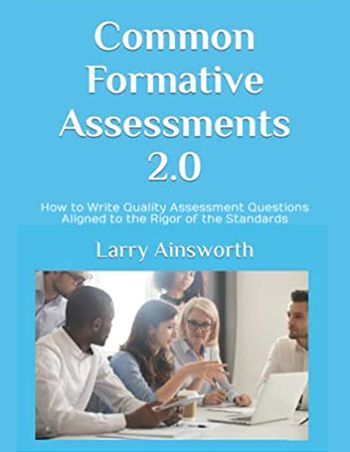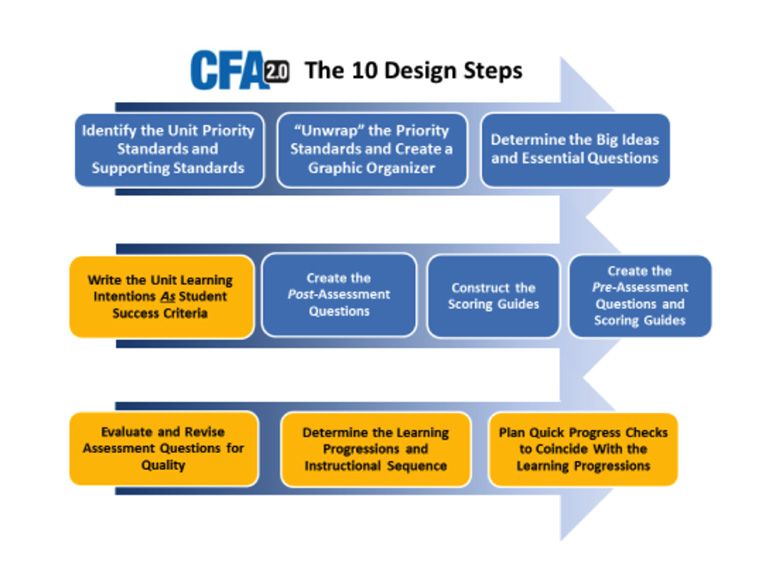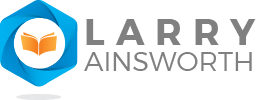TIMELESS PRACTICES TO IMPROVE STUDENT LEARNING
Supporting educators and leaders in their important work of helping every student become a confident and successful learner
Common Formative Assessments 2.0
TIMELESS PRACTICE #4

BOOK DESCRIPTION:
Because the inferences educators make about student learning can only be as good as the evidence they collect, the source of that evidence—the assessments themselves — must be of high quality.
An all-new update to the original 2006 book, CFA 2.0, Common Formative Assessments 2.0: How to Write Quality Assessment Questions Aligned to the Rigor of the Standards (2021), shows educators how to design high-quality formative assessments — and more! It also describes with clarity how to create a system of intentionally aligned components (standards, instruction, assessments, and data analysis) that all work together to improve student learning.
CFAs include a blend of assessment formats: Selected response, constructed response (short and extended), and Essential Questions requiring students’ Big Idea responses. This multiple-format assessment makes learning more visible because it affords students more than one way to “show all they know.”
Teacher teams use resulting student responses as diagnostic feedback to correctly interpret student understanding and differentiate instruction. Students use the same valuable feedback to monitor and adjust their individual learning strategies.
DEFINITIONS:
Common Formative Assessments (CFAs):
- Aligned pre- and post-assessments within units of study
- Collaboratively designed by a grade-level or course-level team
- Administered to students by each participating teacher throughout school year
- Assess student understanding of unit learning intentions (derived from selected standards)
- Questions directly match levels of cognitive rigor of unit learning intentions
- Success criteria explicitly describe what students are to include in their responses
- Valuable feedback shows what students currently know and still need to learn
- Provide a clear lens through which teachers see their instructional impact on student learning
FEATURES:
Features of the CFA 2.0 Process:
- Applies to all standards - not the Common Core only - in all grades, all content areas
- Presents students with success criteria at beginning of unit
- Shows how to design assessment questions to match levels of cognitive rigor
- Underscores importance of teacher teams aligning pre-and post-assessments for each unit
- Reflects formats, vocabulary, and rigor of external exams to help prepare students
- Presents research-based criteria for assessment design: validity, reliability, freedom from bias
- Explains how to use quality guidelines to critique and revise assessment questions
- Shows how to collaboratively plan—in advance of instruction—unit learning progressions
- Illustrates how to pair quick progress checks with learning progressions
- Allows for timely use of assessment data by both teachers and students
- Explains role of leaders in implementing and sustaining CFAs
- Provides continuing ELA and math examples for all ten design steps
- Poses reader reflection questions for team discussion at end of each chapter
- Composed by top education consulting firm with Larry Ainsworth

Larry Explains the Need to Upgrade Your CFAs
PROMINENT ENDORSEMENTS:
“One of the hardest tasks for teachers is to align a pre- and post- classroom assessment to best measure the change or progress made between the two occasions. Such a test needs to have questions in the two tests anchored on a common scale (i.e., whatever is measured on each occasions should be the same construct) and anchored on a common difficulty scale. Ainsworth spells out how classroom teachers can work together to create such tasks and this then allows a major focus, as it should, on using the progress to help monitor learning and adapt teaching.
“The book is an update on an already successful text, and the new material in this book is critical to its value: Ainsworth introduces constructive alignment of learning objectives, standards, success criteria, classroom and larger-scale assessments, and emphasizes the quality of assessments leading to excellent diagnostic interpretations of data – but does not ask teachers to do all this alone – but in a community of experts lead by instructional leaders (the chapter on PLCs is worth buying the book in itself). All of this with the intention of maximizing our positive impact on student learning.
“There have been many who have written about the power of success criteria, growth and progress, assessment for teachers — but not how to do it. Ainsworth spells it out to perfection. It seems so obvious – create the pre- and post- measures as part of the lesson planning; then make the links between pre- and post and this is the learning progression. So why do we not do this? Because it requires a major transformation in how we think about our role. No longer just teach and then see how well the students listened to us by creating an assessment at the end focused on what we covered. Changing this thinking is the power of this book.
“There are so many gems in this book. For example, Ainsworth is not talking about ‘tests’ but about ‘tasks,’ which opens up so many more possibilities. The sections on the qualities of measures are directed to classroom tasks; and the many varied examples based on the Common Core will make it so much more practicable for teachers using those standards to implement many of the major purposes of the nationally consistent curriculum.”
John Hattie
Professor of Education and Director of the Melbourne Education Research Institute
University of Melbourne, Australia
jhattie@unimelb.edu.au
“Formative assessment’s essence is its reliance on evidence-informed judgments about the need for instructional adjustments. Ainsworth relied on an analogous strategy in refining the recommendations he made in 2006 regarding common formative assessments. Based on nearly a decade’s worth of real-world evidence obtained by his watching educators implement those earlier suggestions, Ainsworth has clearly refined his thinking about group-guided formative assessment. To most of us, a designation of 2.0 represents a “new and improved” version of whatever’s being described. Well, in every sense of its definitely deserved designation, this powerful book represents Common Formative Assessments 2.0.”
W. James Popham
Professor Emeritus, UCLA
wpopham@ucla.edu




